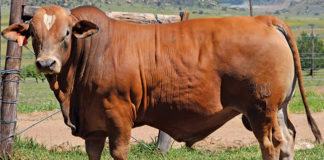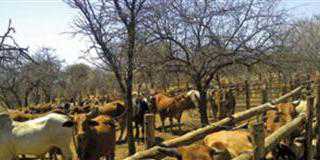You’d expect to find sprouts neatly packaged on supermarket shelves, or perhaps even growing on your kitchen windowsill. You wouldn’t expect to find them in a feed trough, being munched on by sheep. Yet that’s exactly what’s happening in a stock-theft riddled belt between Cedarville and Matatiele in KZN.
Francois Botha is regaining control over his flock of Dohne Merino sheep on his 4 800ha Entremonts farm in the Drakensberg foothills by feeding them a mixture of sprouting grain in a feedlot. “Stock theft is so bad that I had to cut down my flock from several thousand to about 800,” he explains. “If this system works, I can run the sheep in a small secure area with an electric fence around it. It’s less risky than extensive range grazing.”
The sprouting system
Sprouting, or aeroponics, is a process of moistening seed with plain water through a fine sprayer to stimulate germination. “The sprouting grain seed contains all the energy it needs for six to seven days of growth,” explains Francois. “It’s unnecessary and a waste of money to add nutrients to the water as the sprout seeds need no extra nutrients in that time.” Sprouting isn’t a new feeding method, but it’s still very much in the experimental stage on Francois’s farm. Just over two months ago, he bought three sprout producing machines for R150 000 each from Johannesburg-based company Voer-Boer.
The units resemble 6m shipping containers. Inside, however, a sprouting unit is insulated and fitted with a management system that controls the flow and temperature of the air, as well as lighting, a water pump, a fine sprinkler system and aluminium racks with plastic trays. The unit functions as a mini-greenhouse with controlled constant temperatures and time-controlled sprinklers.
The sprinklers automatically switch on for 40 seconds every two hours. The temperature is kept at a constant 22°C. The sprouting process runs on a simple six-day cycle. Every day, trays of fresh dry grain are slotted into racks on the one side of the container, and trays of six-day-old sprouts are removed from the other side.
Low on cost, high in protein
For every 50kg dry grain going into the sprouting system, 300kg of wet sprouts come out. This sprouted grain is fed to the sheep in the feedlot at a rate of 1kg in the morning and 1kg in the evening per sheep, with hay fed ad lib. “The sprout fodder costs about 50c/kg,” says Francois. “It’s cheaper than producing fodder under centre pivot. But you must ration it, as it’s high in protein.”
Protein content depends on the mix of seeds sprouted, but Francois maintains a maximum protein content of 16%. “At day six, the sprouts are at their nutritional peak. After that, the protein content falls as the sprouts grow.”Francois believes that grain is better used sprouted than fed dry.
“If you feed one maize pip to a cow, the cow only uses 50% of it. The other half passes through the animal. That means for every 1 000kg of feed, 500kg is unused. With sprouting, the animal uses 95% of the seed as it’s softer and more palatable.”Francois uses a mix of soya beans, maize and wheat, but stresses that a farmer can vary the grain mixture.
However, the basis should be wheat or barley. “And you must use unprocessed grain and not seed grain, as the latter may have been treated with inoculants and seed protection compounds that could be toxic if fed to animals,” he cautions. The animals don’t take to the sprouts instantly and must learn to eat it. “We mix a bit of molasses and grass in with the sprouts. It takes two to three days for the animals to get used to it.”
Carrying capacity, theft and water issues
If Francois’s sprouts trial in his sheep feedlot works, and he gets enough growth out of the animals, he’ll rebuild his flock. “A pen or feedlot system doesn’t use much space, so I can increase the carrying capacity of my land. Carrying capacity and theft are my major concerns.” It could also help him get around issues like drought, water restrictions and difficulties in obtaining water use licences.
“It takes only 1â„“ of water to produce 1kg of fodder – one-thousandth the amount of water needed to produce the same quantity under irrigation. Under irrigation, you wait at least two weeks for pasture to grow and at least three months before you can graze it. The sprout system gives feed within six days. “That’s the theory anyway, and theory and reality don’t always go together. Only time will tell.”
Contact Francois Botha on 073 147 4666 or e-mail [email protected], or contact Voer-Boer on 011 965 1202 or e-mail [email protected].













